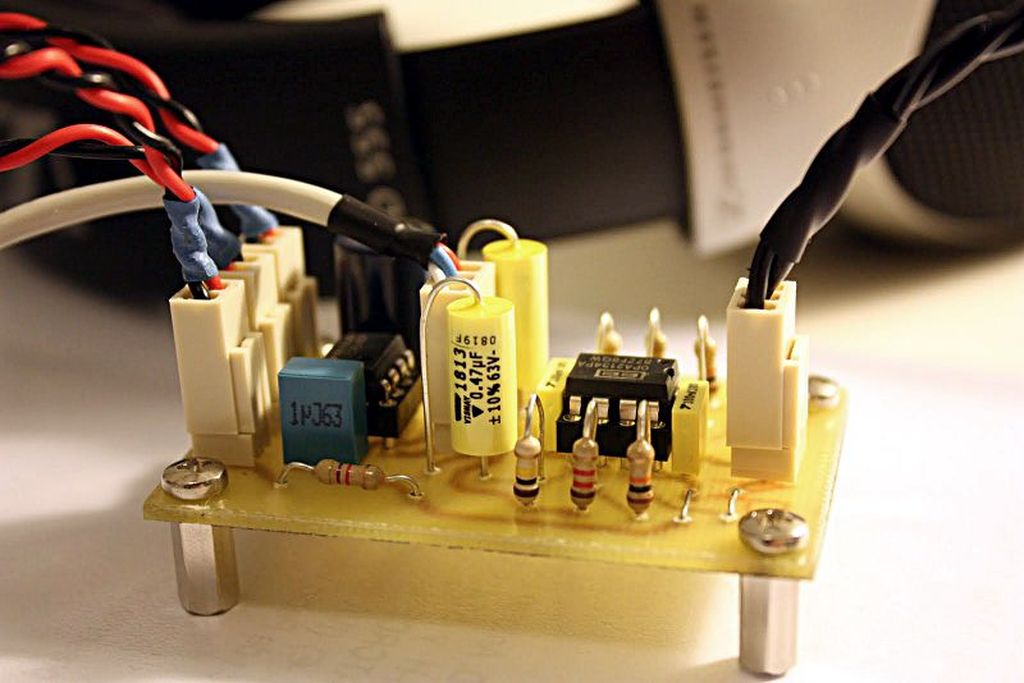My new cMoy case.
By isendev.
Posted on 2012/07/26 18:10.
I've been working in a case for my new cMoy build using a Hammond 70009 diecast aluminum enclosure. This is an IP54 compliant box with dimensions of 92 x 92 x 38 millimeters. To install all the in/out connectors, holes were drilled around the case using a drill press.
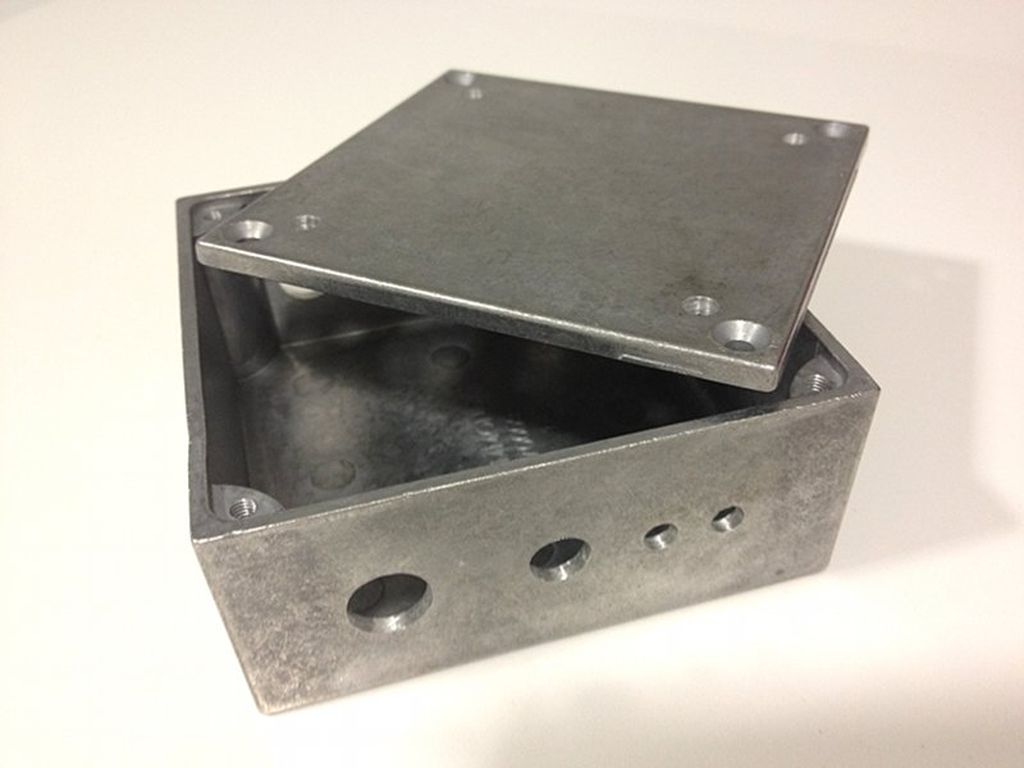
After that, the paint process started: Two acid primer coats and 600 grit wet sanding were required to prepare the surface.
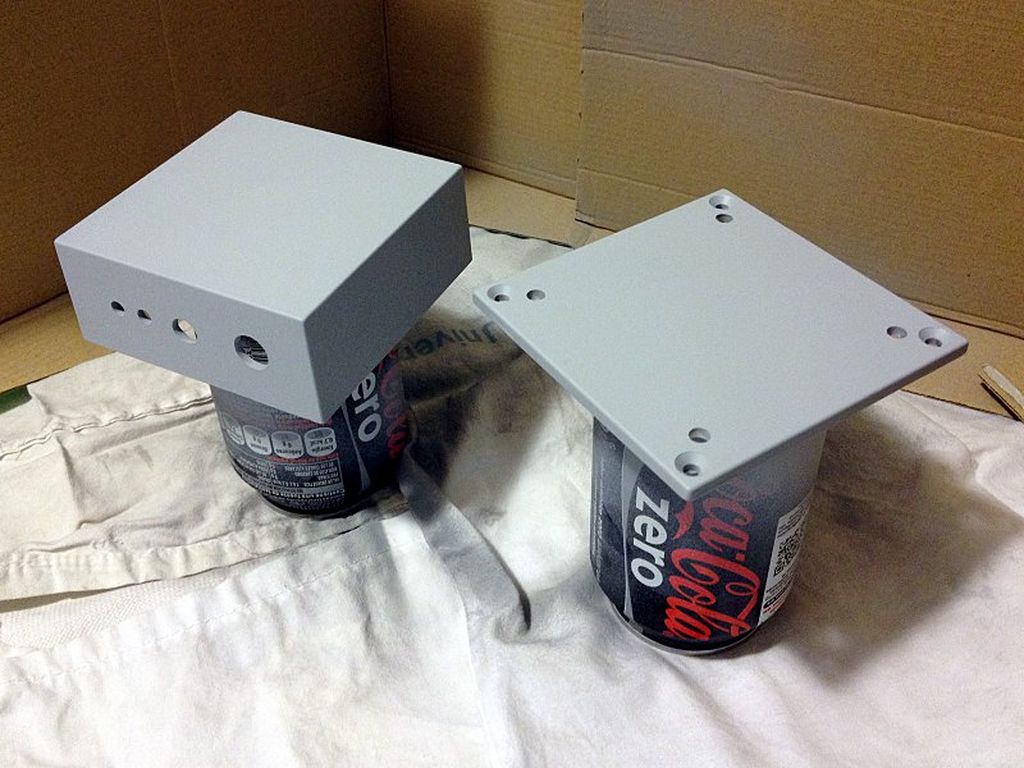
After deeply cleaning the parts to remove all the sanding dust, acrylic paint and clear coats were applied to obtain a sleek glossy finish.
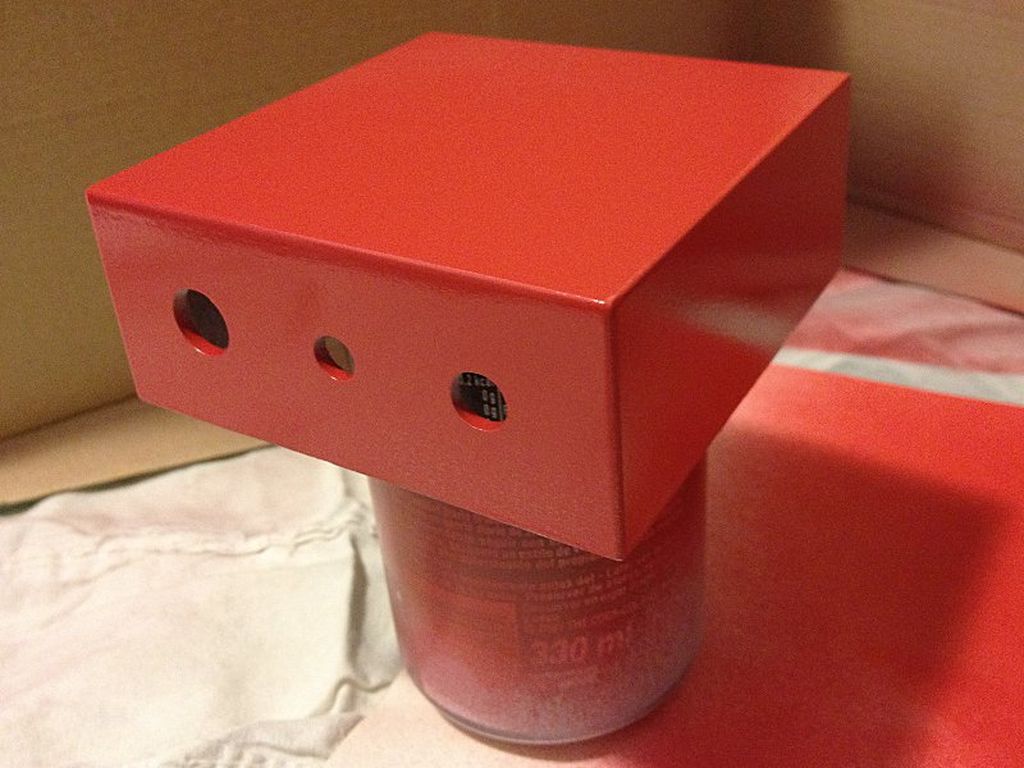
Finally, I installed four through-hole rubber pads on the bottom cover to prevent the enclosure from sliding off the table. Now, It's ready to house the cMoy PCB and its stuff (cables, connectors and switches).
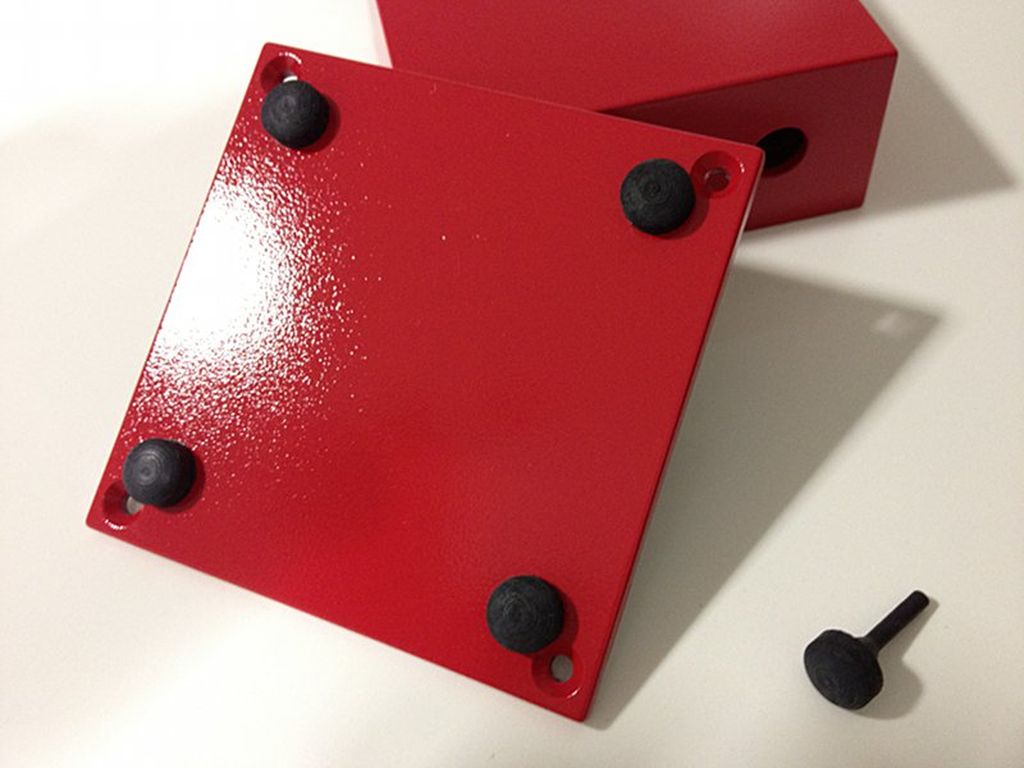
My Raspberry Pi is up and running.
By isendev.
Posted on 2012/07/13 23:57.
Tagged as: hardware, programming.
Finally, after two long months, my Raspberry Pi is here. And the first impression could not be better. It's a very small, but capable computer that can execute a full fledged OS like Debian Linux with great amount of dignity, and in the next weeks, seems that things will run speedier when ARMv6 "hard float" binaries be available for public consumption :)
The Foundation's main goal seems accomplished: They've created a powerful (and cheap) piece of hardware that turns to be a very nice way to introduce our childs into computing world. Congrats to everyone on the Rasberry Pi team for it!
Now, I'm looking for a case for my little motherboard... Maybe a bit of origami?
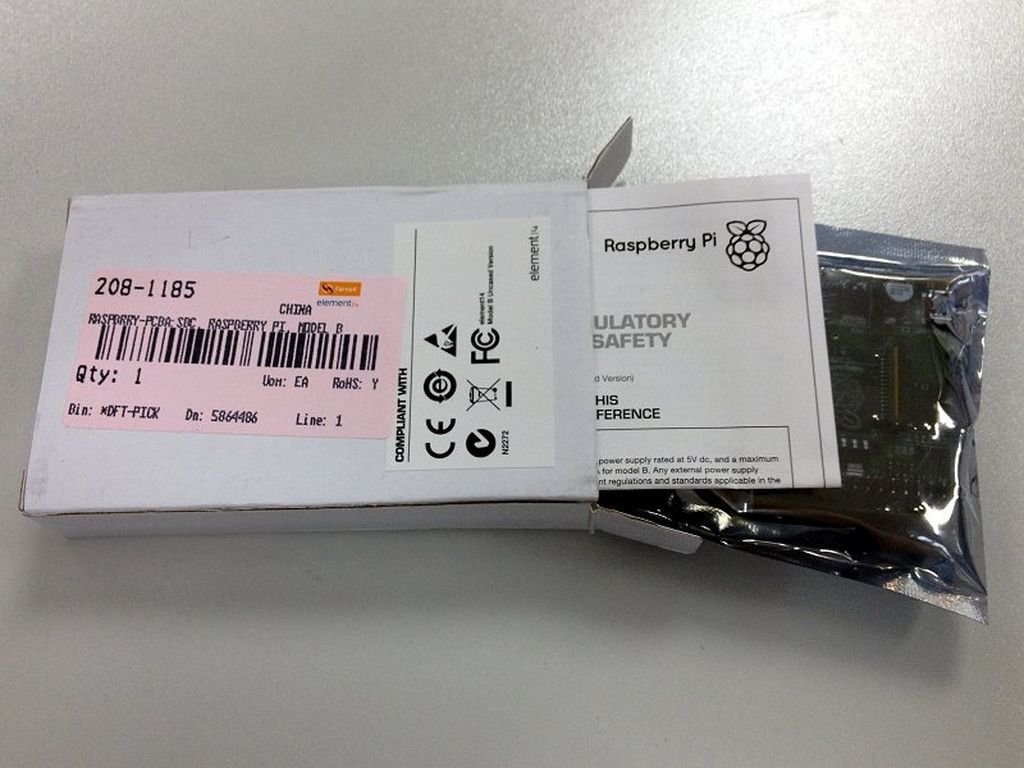

Moosaik.
By isendev.
Posted on 2012/05/30 14:52.
Tagged as: programming, graphics, mootools.

I've been pretty busy lately but over the last few weeks I've been learning about how to make Mootools and Instagram API play nice together. The result of this work is Moosaik, a small client application to browse Instagram public image streams.
After login with your Instagram account, the browser shows you the current most popular Instagram images in a mosaic layout with 32 tiles. Each image can be zoomed using a Mootools-based lightbox. From there, you can click on the username link to browse the latest images from user's public stream. Alternatively, you can browse for a specific user using the search box.
In future versions, I would like to add new features like image stream paging, multiple search result box or user image stream loading from URL. Feel free to try it and send me your comments.


My first CMoy build.
By isendev.
Posted on 2012/03/27 01:52.
Now I'm working on a second revision of my custom CMoy build, but before posting more details about it, I want to recap some information of my original build from April 2010.
But first of all... What's a CMoy?
Taken from the Wikipedia:
A CMoy is a pocket headphone amplifier originally designed by Chu Moy on the headwize.com Headphone Resource Site and public discussion Forums. The headphone amplifier is designed around single or dual-channel op-amps such as Burr-Brown's OPA2134 or OPA2132PA, however, a wide variety of op-amps have been successfully implemented. The amplifier's design is quite simple. It consists of only a few components, can be assembled on a small section of protoboard, has a lower parts cost than other headphone amplifiers, and can run for many hours on a single 9 volt battery.I was searching for a simple electronic schematic to test the tone-transfer method for etching printed circuit boards at home, and this small headphone amplifier was a good point to start. I found tons of information about it at headwize.com and diyaudio.com community forums but, without a doubt, the best resource was Tangensoft's website. There you can find the most complete guide to design and build your own CMoy.
And here is my original Eagle PCB layout. It's easy to see the main modification done to the basic CMoy design: I used a rail splitter IC instead of a resistor bridge to obtain the required voltage levels for running the op-amp.

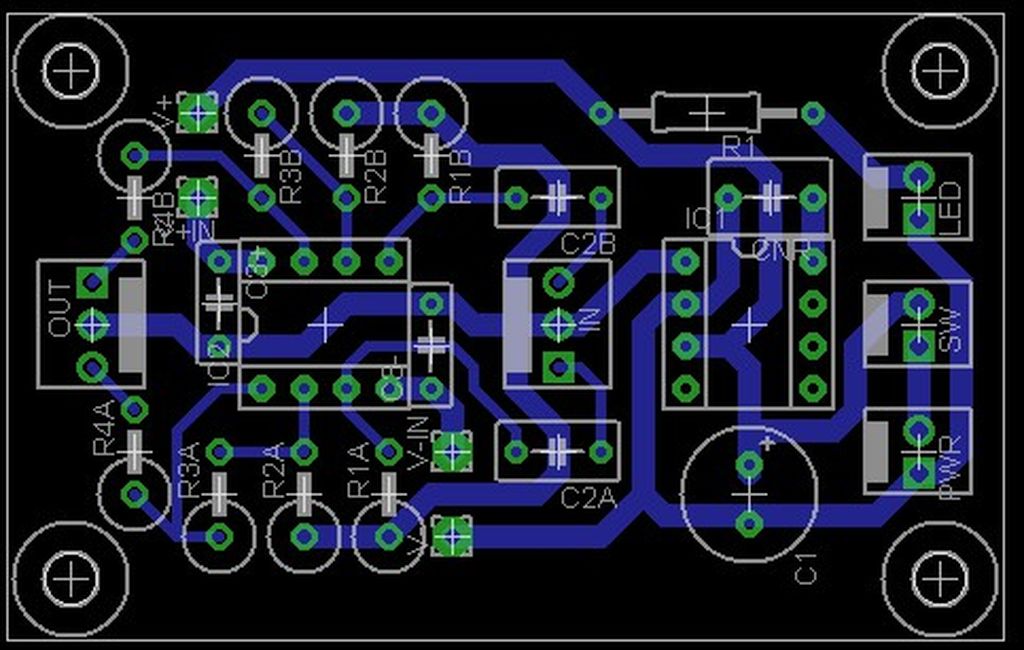
This is the full component list used in my build:
- Power section:
- 1 x Panasonic FC 470uF. 25V. electrolythic capacitor.
- 1 x Texas Instruments TLE2426CP rail splitter.
- 1 x DIP8 socket.
- 1 x Generic 1uF. 63V. polyester capacitor (TLE noise reduction).
- 3 x Molex KK 2 pin vertical male connectors (power input connector, power switch connector and LED connector).
- 2 x Matsushita/Panasonic metallized polyester film capacitor ECQE Series - 0.1uF./100V. - Mylar PET dielectric (input capacitors).
- 1 x Texas Instruments / Burr-Brown OPA2134PA Op-Amp.
- 2 x Generic 0.1uF. 100V. polyester capacitor (Op-Amp decoupling capacitors).
- 1 x DIP8 socket.
- 2 x Molex KK 3 pin vertical male connectors (audio input / output connectors).
- 2 x Generic 100K. 1/4W. resistor.
- 2 x Generic 10K. 1/4W. resistor.
- 2 x Generic 2.2K. 1/4W. resistor.
- 1 x M223-RS 6.5mm. female switched stereo connector - chassis mount (audio output jack).
- 1 x Generic 3.5mm. female stereo connector - chassis mount (audio input jack).
- 1 x Vishay P9A Series 100mW. 10K. logarithmic dual potentiometer - chassis mount (audio input attenuation).
- 1 x Generic 5mm. red LED.
- 1 x Generic 5mm. LED holder - chassis mount.
- 1 x Generic 100K. 1/4W. resistor (LED resistor).
- 1 x Generic switch - chassis mount.
- 1 x Generic power Socket - chassis mount.
- 3 x Molex KK 2 pin female connectors (power input jack, power switch and LED holder).
- 2 x Molex KK 3 pin female connectors (audio input / output jacks).
- 1 x Generic 12V. 1.25A. wall wart (power supply).
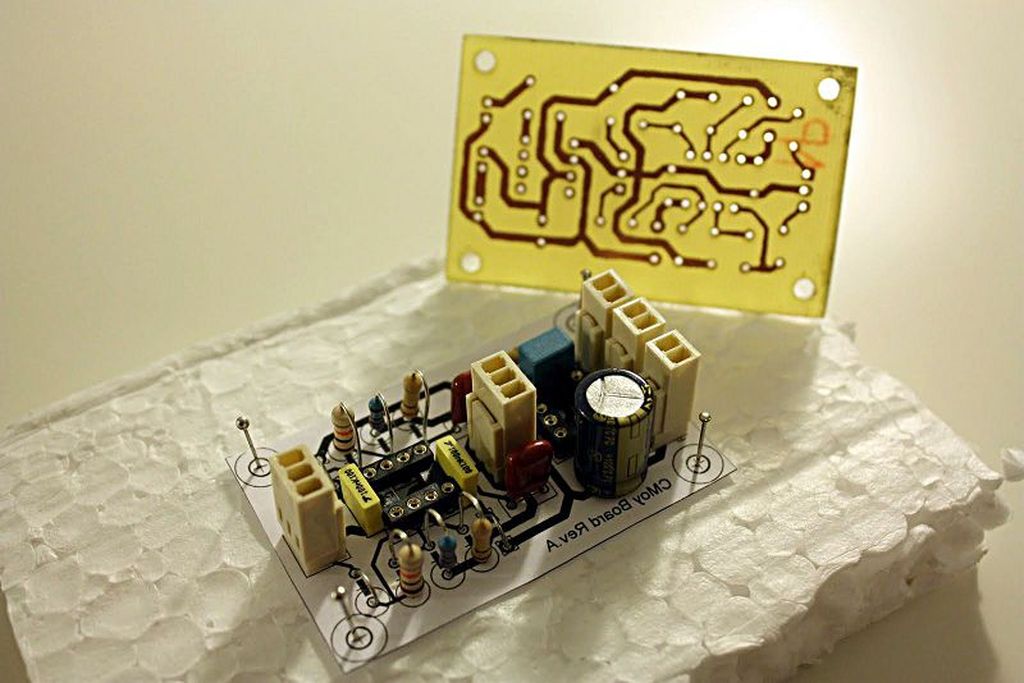
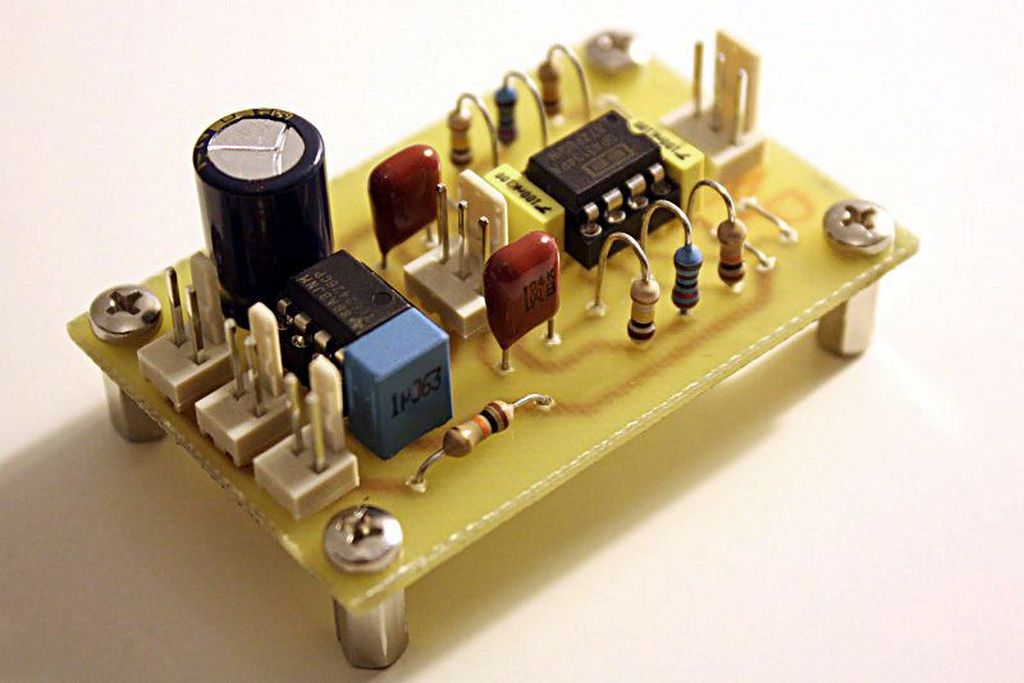
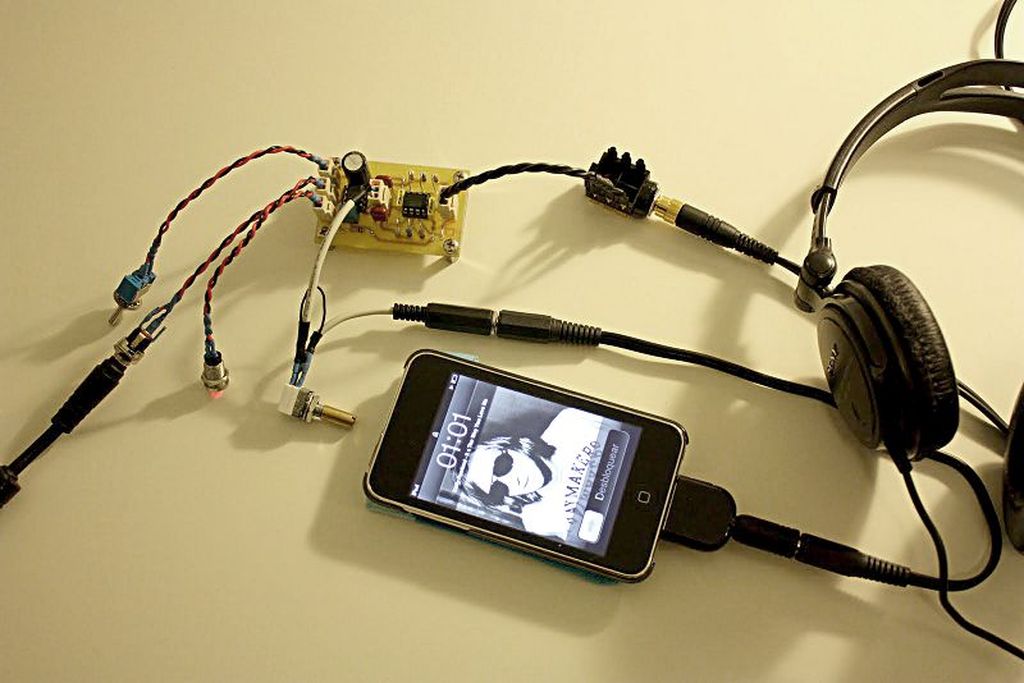
After some testing, a few changes were done to the board:
- 2.2K Resistors were replaced by 1.2K. resistors to modify CMoy´s gain ((10/1.2) + 1 = 9.3dB.) and improve the output volume using the iPod stereo jack.
- Panasonic ECQE 0.1uF./100V. input capacitors were replaced by Vishay MKT 0.47uF./63V. capacitors to improve bass handling.
- 10K. 1/4W. LED resistor was replaced by 4.7K. 1/4W. resistor to make the power LED brighter.
